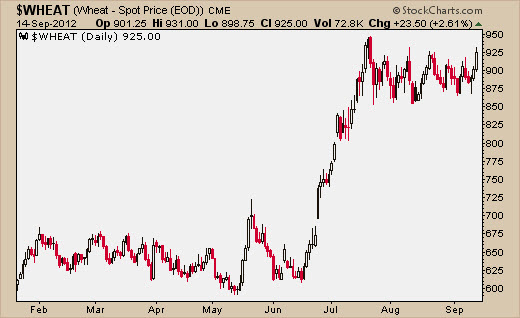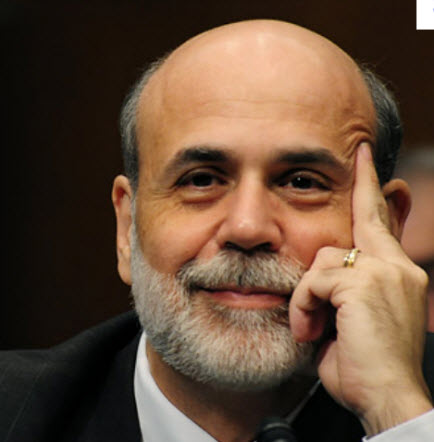For every 10 percent increase in global food prices there is a 100 percent increase in anti-government protests, according to a recent report from the International Monetary Fund. Looking at recent price increases in global ag commodities — up about 20 percent so far this year — it’s no wonder there are Arab Fall flare ups (this time directed at America) breaking out across the globe. According to the IMF, a 20 percent increase in foodstuffs should triple the levels of unrest, and that seems to be precisely what’s happening.
The chaos caused by food inflation and hunger back in 2011 was heartwarmingly marketed by propagandists as democratization. Remember the French Revolution and “let them eat cake.” The causa proxima was food inflation, not stupid remarks or films. I hypothesize: Food Price Index + FAO Hunger Index = Riots, Civil Wars and Revolutions.
The United Nations’ Food and Agriculture Organization also offers a Global Hunger Index that measures levels of food stress around the world. According to the 2011 index, a hunger level above 30 is considered extremely alarming, 20 to 29 is alarming and 10 to 19 is serious.
Among the countries to watch is Nigeria with a level of 16. About 10 percent of U.S. oil imports come from Nigeria, and it’s the sweet oil variety that can’t be substituted if disrupted. In 2011, Yemen, which is in open disorder and a completely failed state, had a hunger index of 25. Angola, another oil producer, had a hunger index of 27 and considered be in the “extremely alarming” category. Cameroon, a small African oil producer, had a score of 18. That country was severely impacted by food riots during the 2008 commodity bubble. Both Bangladesh and India were ranked 24. Both countries were impacted this year by a poor monsoon period, which normally brings much-needed rain for crops. Trouble spot Pakistan is 21.
Obviously, not all countries are in high-hunger-index situations, but most of the world is spending a larger percentage of income on food. This includes 48 million Americans qualifying for food stamps. A 35 percent pop in prices for people already paying 30 percent of their income on food has the effect of triggering civil unrest.
Egypt is the world’s largest wheat importer, bringing in 60 percent of what it consumes from varied global sources. Egypt also imports 40 percent of its food and is highly vulnerable to rationing and steep prices. On average, Egyptians use 42 percent of their income on food. Watch wheat prices carefully. It is showing new signs of another lift off since the Fed’s open-opended QE announcement.
Egypt's Monthly Spending by Category
A new quantitative easing program is oppressive in a strong food-inflation environment. It also aggravates the effect of the drought and encourages speculators to pile into commodities that are already facing rationing. The Bank of Japan released a report that examines the financialization of commodities. With some big players effectively substituting foodstuffs and other commodities for near-zero-percent returns at the bank, the heightened interest in these commodities goes far beyond normal economic demand. It is key to understanding the impact of both QE and Zero Interest Rate Policy (ZIRP). The end result of the monetary experiment is a massive misallocation of capital, resulting in global hunger and social-political instability. Indeed, this is Ben Bernanke’s ultimate gesture to global food consumers.
For additional analysis on this topic and related trades, subscribers go to Russ Winter’s Actionable. The subscription fee is per quarter and helps support Russ’s work on your behalf. Click here for more information or to subscribe.
Source: Wall Street Examiner











